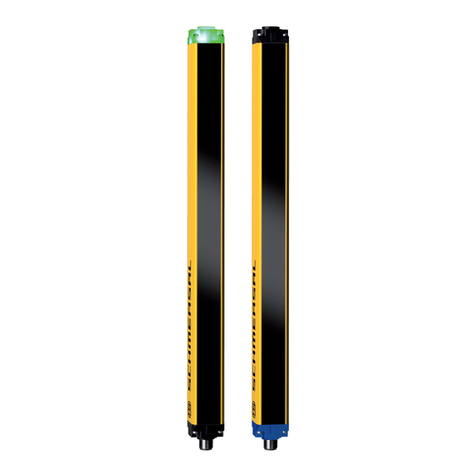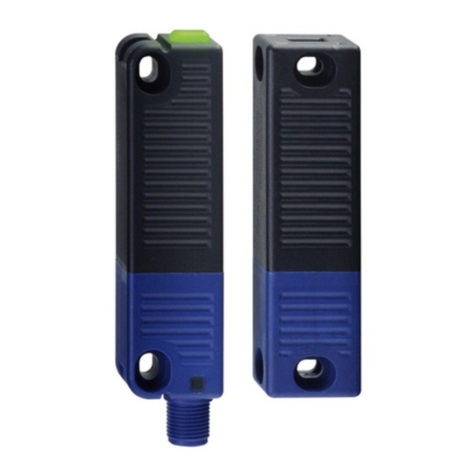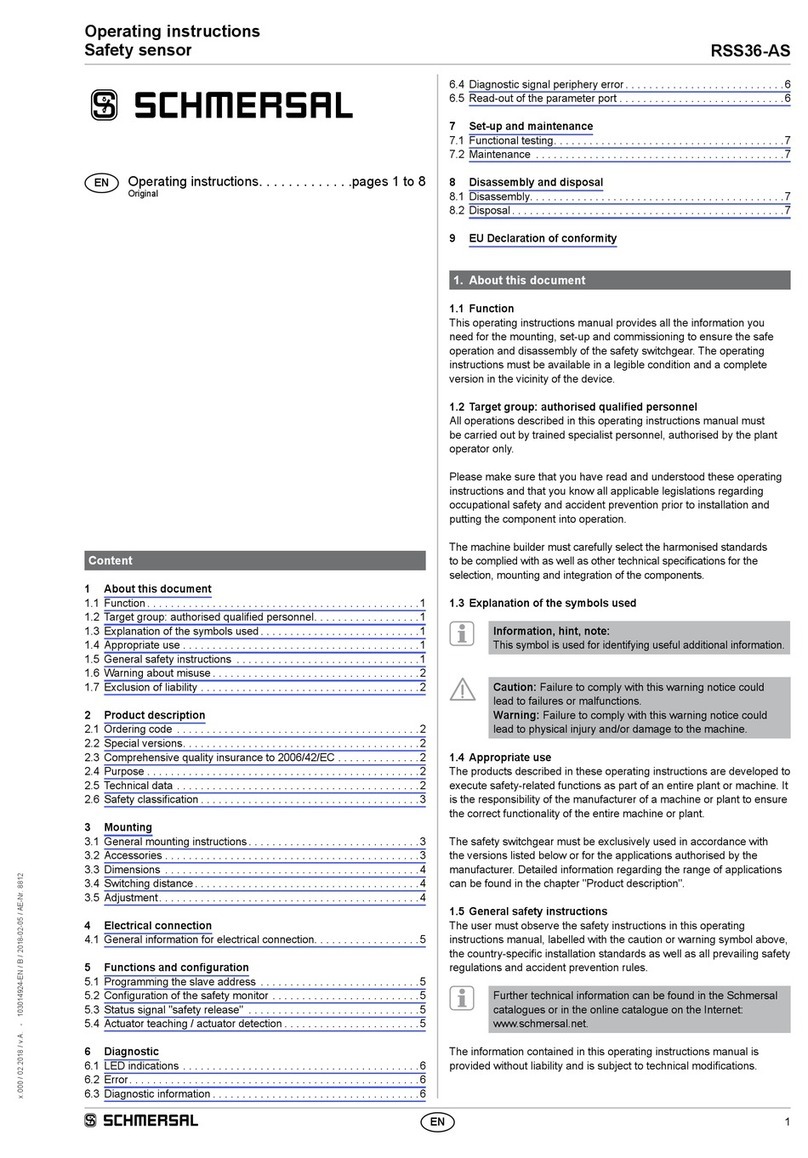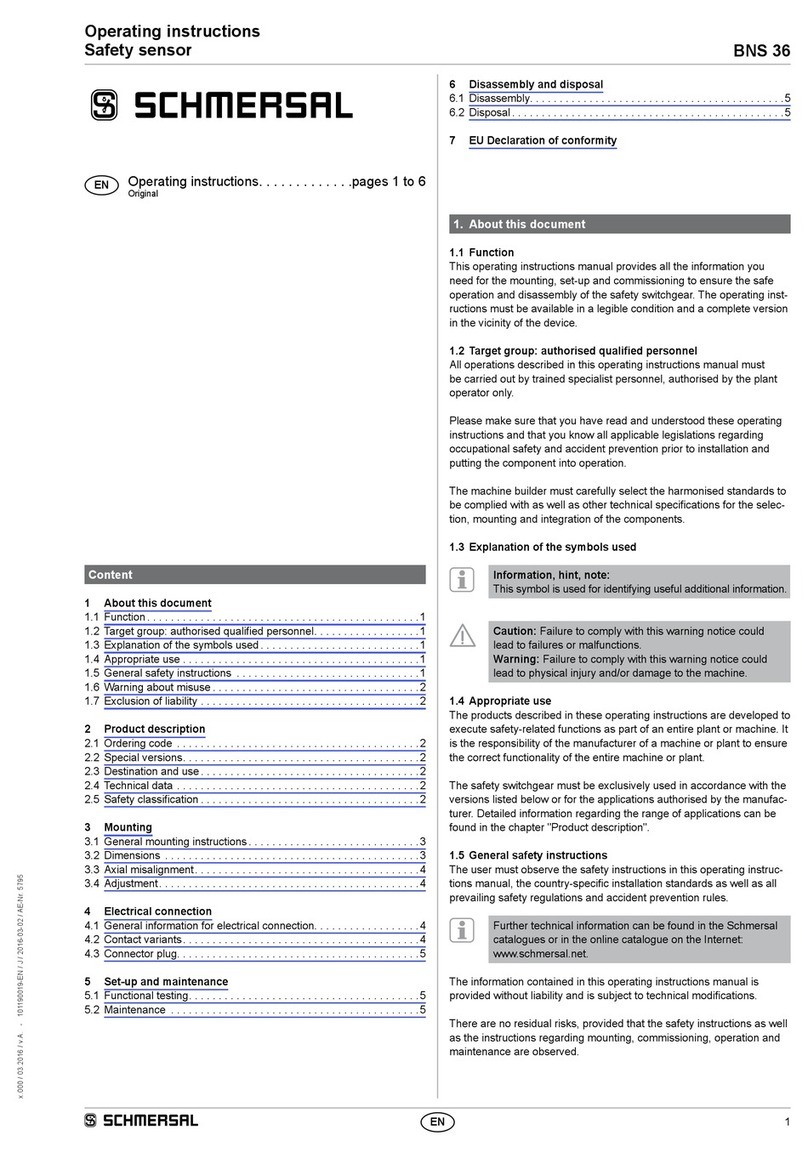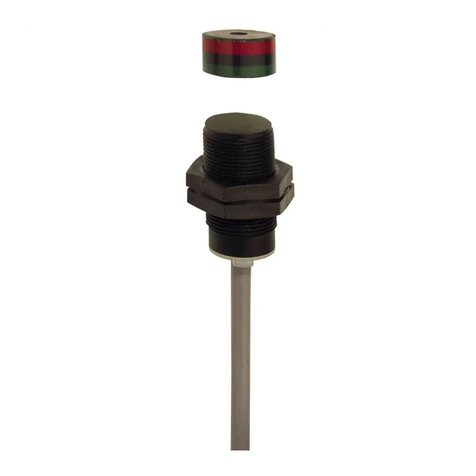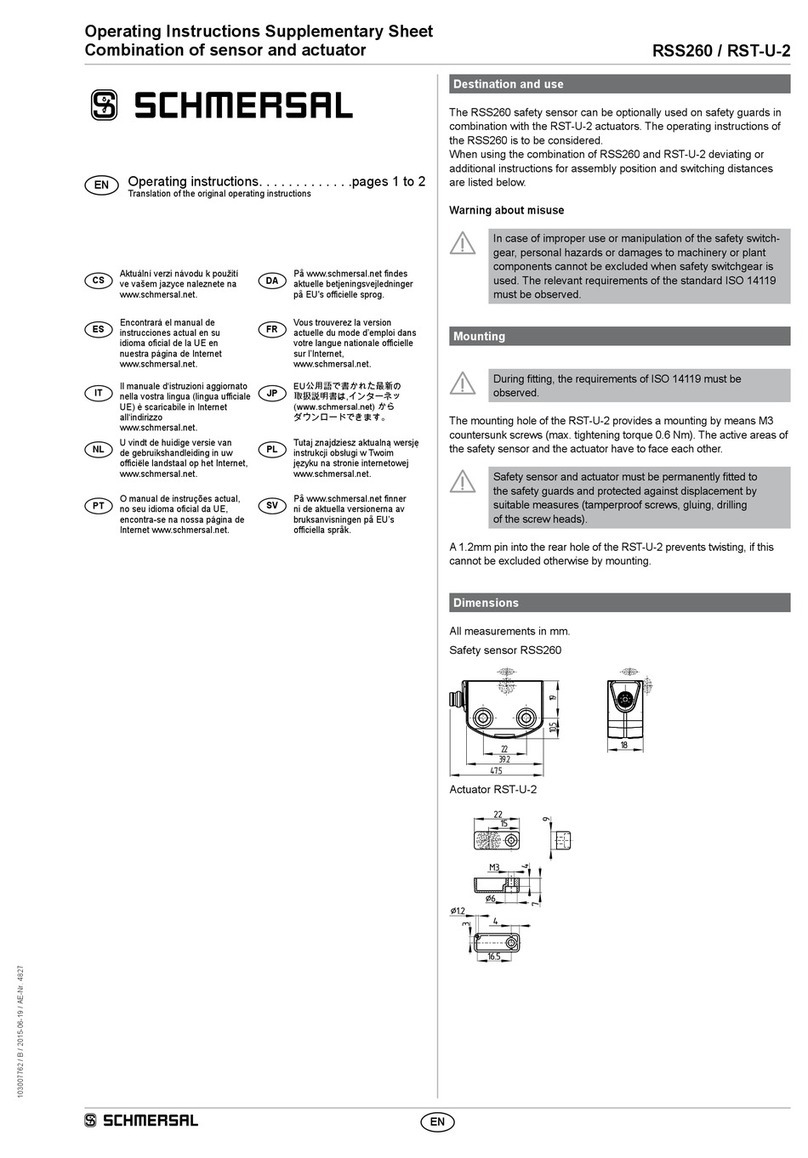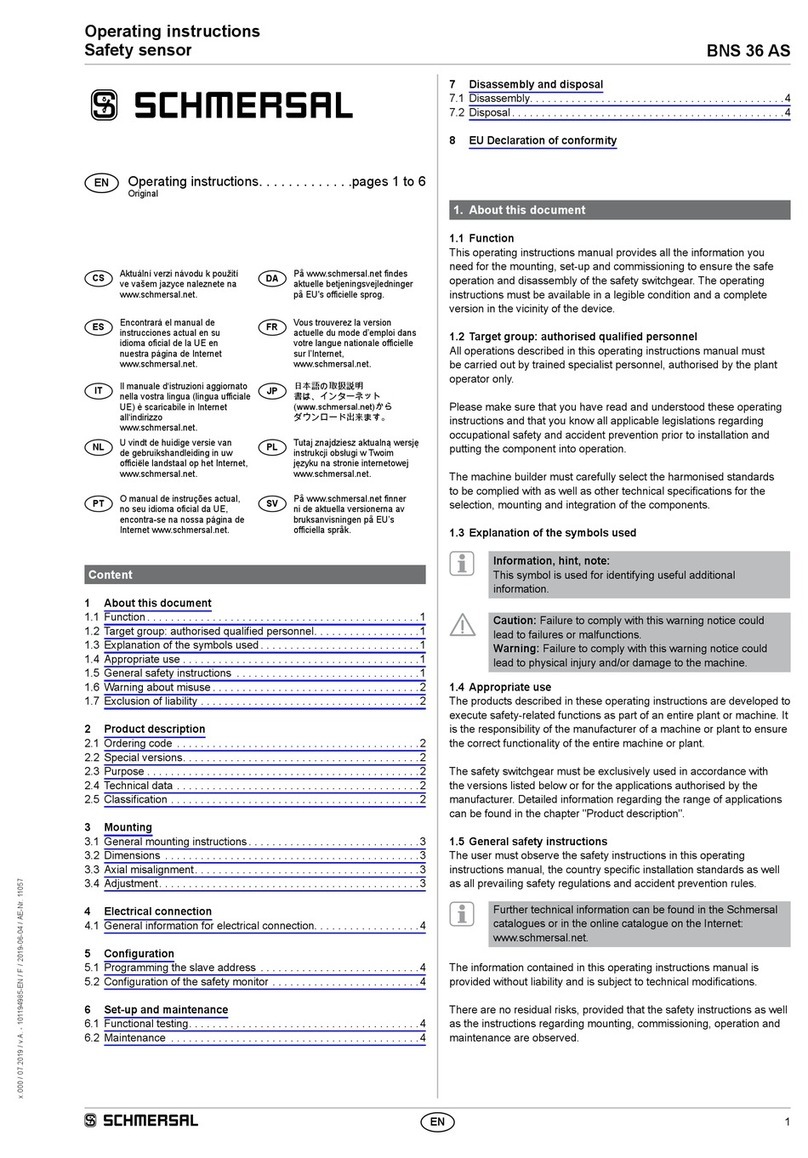
Classification ZVEI CB24I, Source C1
C2
C3
Electrical data - Safety digital outputs
Designation, Safety outputs Y1 and Y2
Märkström (säkerhetsutgångar) 250 mA
Utgångsström (säker utgång), maximum 0,25 A
Säkerhetsutgång short-circuit proof, p-type
Voltage drop Ud, maximum 1 V
Leakage current Ir, maximum 0,5 mA
Voltage, Utilisation category DC-12 24 VDC
Current, Utilisation category DC-12 0,25 A
Voltage, Utilisation category DC-13 24 VDC
Current, Utilisation category DC-13 0,25 A
Test pulse duration, maximum 0,3 ms
Test pulse interval, typical 1000 ms
Classification ZVEI CB24I, Source C2
Classification ZVEI CB24I, Sink C1
C2
Elektriska data - diagnosuttag
Designation, Diagnostic outputs OUT
Design of control elements short-circuit proof, p-type
Voltage drop Ud, maximum 2 V
Voltage, Utilisation category DC-12 24 VDC
Current, Utilisation category DC-12 0,05 A
Voltage, Utilisation category DC-13 24 VDC
Current, Utilisation category DC-13 0,05 A
Elektriska data - elektromagnetisk kompatibilitet
Interfering radiation IEC 61000-6-4
EMC rating IEC 60947-3
Statusindikering
Notera (LED-statusindikering) gul LED: driftsstatus
grön LED: spänningsövervakning
röd LED: störning

